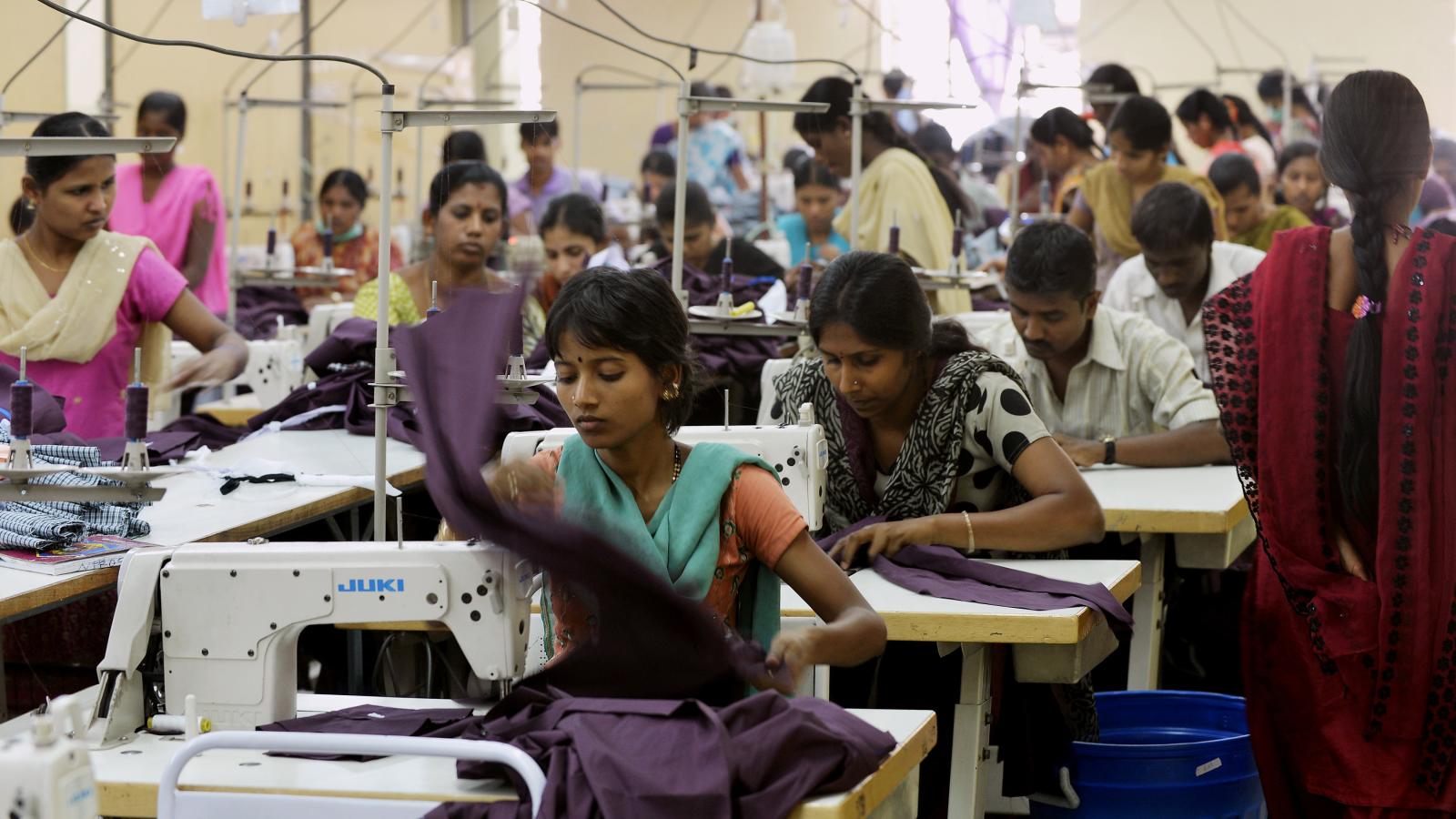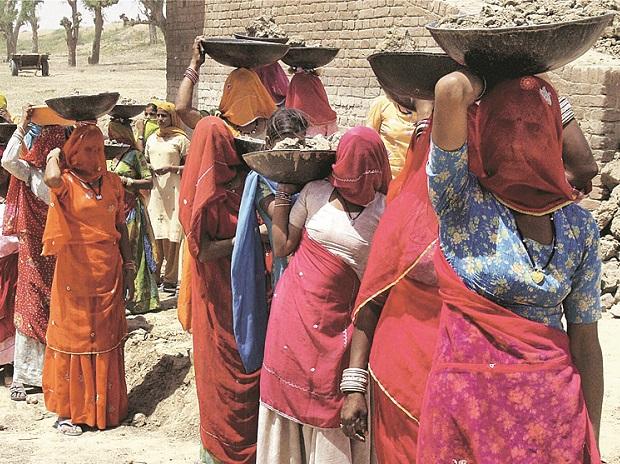
- Home
- News
- Analysis
- States
- Perspective
- Videos
- Education
- Entertainment
- Elections
- World Cup 2023
- Features
- Health
- Business
- Series
- Economy Series
- Earth Day
- Kashmir’s Frozen Turbulence
- India@75
- The legend of Ramjanmabhoomi
- Liberalisation@30
- How to tame a dragon
- Celebrating biodiversity
- Farm Matters
- 50 days of solitude
- Bringing Migrants Home
- Budget 2020
- Jharkhand Votes
- The Federal Investigates
- The Federal Impact
- Vanishing Sand
- Gandhi @ 150
- Andhra Today
- Field report
- Operation Gulmarg
- Pandemic @1 Mn in India
- The Federal Year-End
- The Zero Year
- Premium
- Science
- Brand studio
- Home
- NewsNews
- Analysis
- StatesStates
- PerspectivePerspective
- VideosVideos
- Entertainment
- ElectionsElections
- Sports
- Loading...
Sports - Features
- BusinessBusiness
- Premium
- Loading...
Premium

A year on, pandemic has widened the gender gap in India and how
The Covid-19 pandemic only worsened the scenario for women, in terms of discrimination, patriarchal practices and prejudices that increased vulnerability.

Sonia David, 26, a psychology lecturer working in a private school in Bengaluru, lost her job in April 2020 soon after India announced a nationwide lockdown in the wake of the rising Covid-19 cases. She is also doing her PhD at Jain University, Bengaluru. However, her enthusiasm for work or research is not shared by many in her family and social circles. They ask why study more when,...
Sonia David, 26, a psychology lecturer working in a private school in Bengaluru, lost her job in April 2020 soon after India announced a nationwide lockdown in the wake of the rising Covid-19 cases. She is also doing her PhD at Jain University, Bengaluru.
However, her enthusiasm for work or research is not shared by many in her family and social circles. They ask why study more when, they presume, all she would do is get married and manage home as most other women.
But defying the patriarchal notions prevalent in her family and work circles, Sonia is determined to complete her PhD. On the career front, she’s turned into an entrepreneur and started her own counseling firm Mindful Mesmerisms with three other women partners.
But it seems, according to her, patriarchy is everywhere. For instance, as a woman in India, she feels everyone goes by their physical appearance and not by talent. She also points out that she was among many women who lost their jobs during the pandemic as against men who retained theirs.
And when she tried to open a current account, a leading private bank in the city asked her to get a guarantor, preferably a working male professional in the house.
“I am funding my own studies and trying to be independent and run a company. Why do I need a man’s support to open a current account?” she asks, hinting at the patriarchal thinking in the banking system.
“I don’t mean to be pessimistic. There will never be gender equality in this country. There will be an improvement, yes. But as the patriarchy is so deep-rooted in every system, it would be difficult to narrow the gap,” she says.
World Economic Forum report
Sonia’s case and that of most other women was reflected in the Global Gender Gap Report, 2021, by the World Economic Forum (WEF) wherein India dropped 28 places over a year to rank 140th among 156 countries.
India became the third-worst performer in South Asia after Pakistan (153) and Afghanistan (156). On the other hand, some of India’s neighbours such as Bangladesh (65), Nepal (106), Sri Lanka (116) and Bhutan (130) ranked better.
In fact, back in 2016, India was ranked 87 on this list. It had closed 62.5% of its gender gap to date as compared to the global average of 68%.
The most gender-equal country in the world is Iceland. It has maintained its position for 12 years. Finland is second and Norway third, with New Zealand being a close fourth, followed by Sweden. Lithuania, Serbia, Timor-Leste, Togo and the United Arab Emirates.
Data suggests that it will take around 135 years to bridge the gender gap worldwide.

India had only 22.3% of women participating in the labourforce, translating to a gender gap of 72%, as compared to 38.5% women’s participation in Turkey, 49.1% in Mexico, 56% in Indonesia.
The Covid-19 pandemic has amplified existing gender gaps even as women have been on the frontlines of managing the crisis.
“The hardest-hit sectors by lockdowns and rapid digitalisation are those where women are more frequently employed. Combined with the additional pressures of providing care at home, the crisis has halted progress toward gender parity in several economies and industries,” the report said.
Political representation
The report measures the gender gap on four parameters—economic participation and opportunity, educational attainment, health and survival, and political empowerment.
India lost out on all four parameters, with the gap being widest on the political empowerment dimension with economic participation and opportunity being next in line. For instance, the share of women ministers declined the most in India (from 23.1% to 9.1%), the report noted.
Women have been a part of the Union Council of Ministers since 1952. But their representation has remained always low.
Among the 21 Union ministers, only two are women—Finance Minister Nirmala Sitharaman and Minister for Women and Child Development Smriti Irani. Harsimrat Kaur Badal, who was Food Processing Industries minister, had resigned after her party SAD broke ties with the ruling BJP over the controversial farm legislations. The number of women in the Union ministry was six in 2014.
This despite Parliament having 78 women MPs, the highest since independence, forming 14% of all members. All this, while Prime Minister Narendra Modi has been claiming to be working towards furthering women empowerment in the country.
The long-pending promised 33 percent reservation for women in Parliament and state assemblies is yet to be cleared by his majoritarian government. The Bill was first presented in the Rajya Sabha on March 9, 2010.

According to the National Election Watch and Association of Democratic Reforms (ADR) report, among the 5,751 candidate profiles it analysed from the four poll-bound states—Assam, Tamil Nadu, Puducherry and Kerala—only 10.36 percent were women. West Bengal was no different although the report did not take into account the eastern state. The denial of tickets to contest elections by mainstream political parties acted as a huge barrier for women’s entry into politics.
Even the Trinamool Congress led by Mamata Banerjee gave only 17% percent tickets to women in the Assembly polls. However, in the 2019 Lok Sabha polls, the party gave 41 percent tickets to women, unlike any other party.
All that does not seem to be converting on the ground level.
Dwindling sex ratio
The sample registration system (SRS) statistical report, 2018, prepared by the office of the registrar general and census commissioner for the period 2012 and 2018, indicates that two-thirds of the states for which the data was available, fell back on the sex ratio.
At the all India level, the sex ratio dropped to 899 in 2016-18 period from 906 in 2012-13. States like Haryana, Delhi, Gujarat, Karnataka, Maharashtra, Rajasthan and Uttarakhand dropped even further in 2018 compared to 2012-13 figures.
In 2015, PM Modi had launched the Beti Bachao, Beti Padhao scheme to counter the discrimination against women and to curb female foeticide.
Although the MoHFW data shows that sex ratio in Haryana, where Modi launched the mission, had improved from 876 to 924 between 2014 and 2019, the SRS data indicates it had dropped from 866 in 2012 to 843 in 2018. Similar is the case with UP. While the MoHFW data showed a large improvement from 885 to 928, the SRS data showed only a marginal improvement of 869 to 880. Delhi dropped from 866 to 844.
The funds spent on the ‘Beti Bachao, Beti Padhao’ scheme, except for 2019, did not exceed 50 percent of the allocated money. Even in that, half of it was spent for advertisement expenses. That is, for every Rs 100 allocated, only about Rs 50 was spent, and of this Rs 25 was spent on promotion.
The Federal had in the past reported how the lack of funds hampered the progress and made many female students drop out of schools. Experts are also studying if the consequences of the dwindling sex ratio are linked to violence, human trafficking and exploitation of girl child.

Opportunity in pandemic
Pramila Naidu of Karnataka Women’s Commission (KWC) said although the constitution guarantees equal rights and there are various schemes directed at women empowerment, the lack of government support (financially and human resource wise) is hindering the progress.
The pandemic only worsened the scenario for women, despite many being the frontline warriors. The institutionalised discrimination against women, the patriarchal practices, and prejudices worked against them and increased vulnerability.
However, while there are hurdles and reports suggest it would take generations for women to achieve equality, some see the pandemic as an opportunity to push forward women empowerment and bridge the gap.
“Be it healthcare, hospitality, politicians or innovators, women have been front-liners. It is time we discard the gender stereotypes, empower and let women take the lead towards this unrivaled gridlock,” says Jyotsna Uttamchandani, Executive Director, Syska Group of companies. “As Michelle Obama says, “there is no limit to what we, as women, can accomplish.”
She says, particularly in the post-pandemic world, people should not only identify but accept the problems of patriarchy and the governments should come up with a more humane and rational approach and policies to bridge the gap.
Surabhi Goel, CEO of Aditya Birla World Academy, Aditya Birla Education Academy, says for her gender equality means truly being equal. “For me, gender equality means that we need more men as teachers. It means raising my son to do household chores and respecting a woman who may be more successful than him in the future.”

